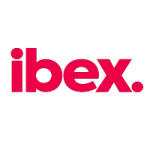ATLaaS: ATL as a Service
A Thought Leader In Toll-Free Number Management Solutions
Helpful Links
PORT YOUR TOLL-FREE NUMBERS TO YOUR NEW RESPORG
This is a pretty straightforward process that RespOrgs can perform. Simply stated, this is when all numbers under a business’s control are transferred from their previous ID to their new unique RespOrg ID. A business cannot add multiple carriers unless they perform this step.
CREATE DEFAULT AND FAIL-OVER ROUTING TEMPLATES:
In this phase, a business should work closely with their RespOrg to create disaster recovery sce- narios and a routing map should an outage occur. Generally, a RespOrg will ask their clients how they want their numbers to route and how they want to utilize their carriers in any given situation.
A RespOrg should also identify any alternate routing scenarios the business may want to have. By creating these templates, the business can move their numbers quickly from one carrier to another. With template-based routing, the routing is passed to the toll-free numbers via the tem- plate, which can be accessed by any quantity of toll-free numbers. Think of a template as a line in a database. This database line contains all routing information, so when you route a toll-free number using a template you are essentially programming that number to only receive its routing information from that database line. If that database line updates, the toll-free number’s routing is updated. Whether you have 1,000 or 100,000 numbers pointed to the template, all numbers are updated simultaneously.
As a RespOrg, or with the assistance of your RespOrg, you can utilize several routing variables which can determine exactly when, how, and who is receiving your inbound toll-free traffic. These routing options include:
Percent based routing: The ability to assign a certain percentage of your overall inbound traffic to a specific carrier. This is a powerful tool for managing load balancing on the fly.
Time of day: The ability to send traffic to a specific carrier only during specified times. This is
another easy to use load balancing tool that can be implemented based on historic call volumes.
Date: The ability to preset the exact date and time that a routing set goes active. This is valuable for when you have advanced notice of a service disruption, like scheduled carrier maintenance for example.
Blocking: The ability to block inbound traffic based on desired parameters. This can also be viewed as the ability to only accept traffic from specific areas by blocking all unwanted areas.
Geographic based routing: The ability to assign a carrier based on the geographic data of the originating inbound call. Geographic categories include: Local Access and Transport Area (LATA), State, NPA, NPA/NXX, and ANI. This functionality becomes helpful when you use two or more car- riers based on their rates in geographic territories. For example, Carrier A charges $0.06/minute for all calls in Oregon and Carrier B charges $0.02/minute for all calls in Oregon. Geographic based routing allows you to take advantage of Carrier B’s lower rate and assign all Oregon inbound traffic to Carrier B. This is also known as least cost routing and can save businesses thousands of dollars, monthly, depending on their inbound call volume.
TEST ALL NETWORKS:
Once the RespOrg has identified the carriers that the business wants to use, and the RespOrg has the numbers porting to the business’s unique ID, the RespOrg should route 100 percent of the numbers down the carriers individually to test each network and make sure there are no challeng- es with the porting process. In test dialing all the numbers, a RespOrg should not only make sure the calls are hitting the correct carrier, but also that the calls are set up on each network correctly and each call is being terminated properly.
APPLY NUMBERS TO THE TEMPLATE:
Once this is done and any challenges are identified and resolved, your RespOrg will apply the toll- free numbers to your desired template. This is where we apply the numbers to routing records that use multiple carriers.
TEST AGAIN ON BOTH NETWORKS:
Finally, if your RespOrg is your carrier, they should test the numbers again because now they’ve put your numbers on the new routing networks. If your RespOrg is not your carrier, and you are operating under an independent RespOrg, contact your RespOrg to test your numbers to ensure that your numbers are working correctly. Testing a second time is a critical step in the process and imperative to making sure the template you’ve created have been built correctly and the calls are being delivered as intended.
In the event of a carrier outage, you should know exactly what actions to take to complete the routing change to move your inbound traffic to the backup carrier. It is recommended that you create a plan for each scenario, whether it be an outage by Carrier A or an outage by Carrier B, and you should be prepared to act. Being prepared will save you time, inevitably saving your business money and preventing a very stressful event. If you are working with a RespOrg who manages your toll-free numbers as an outsourced service, keep their customer support number handy and available should you need to immediately con- tact them to perform the fail-over. If you are your own RespOrg and are using a RespOrg-supplied portal or platform to manage your own numbers internally, be sure multiple members of your team know how to move numbers between one template and another. Like the theory behind toll-free disaster recovery, it’s all about redundancy.













